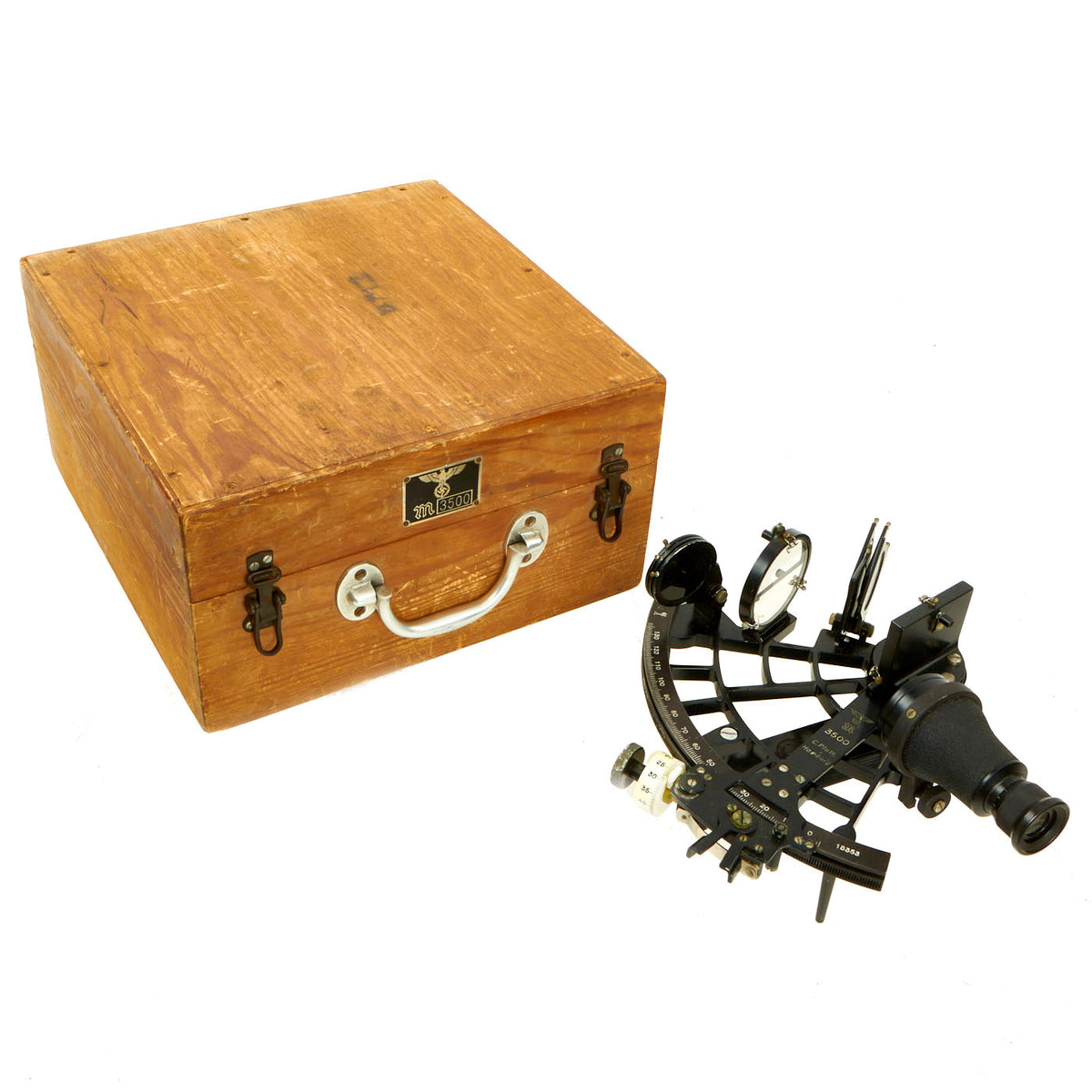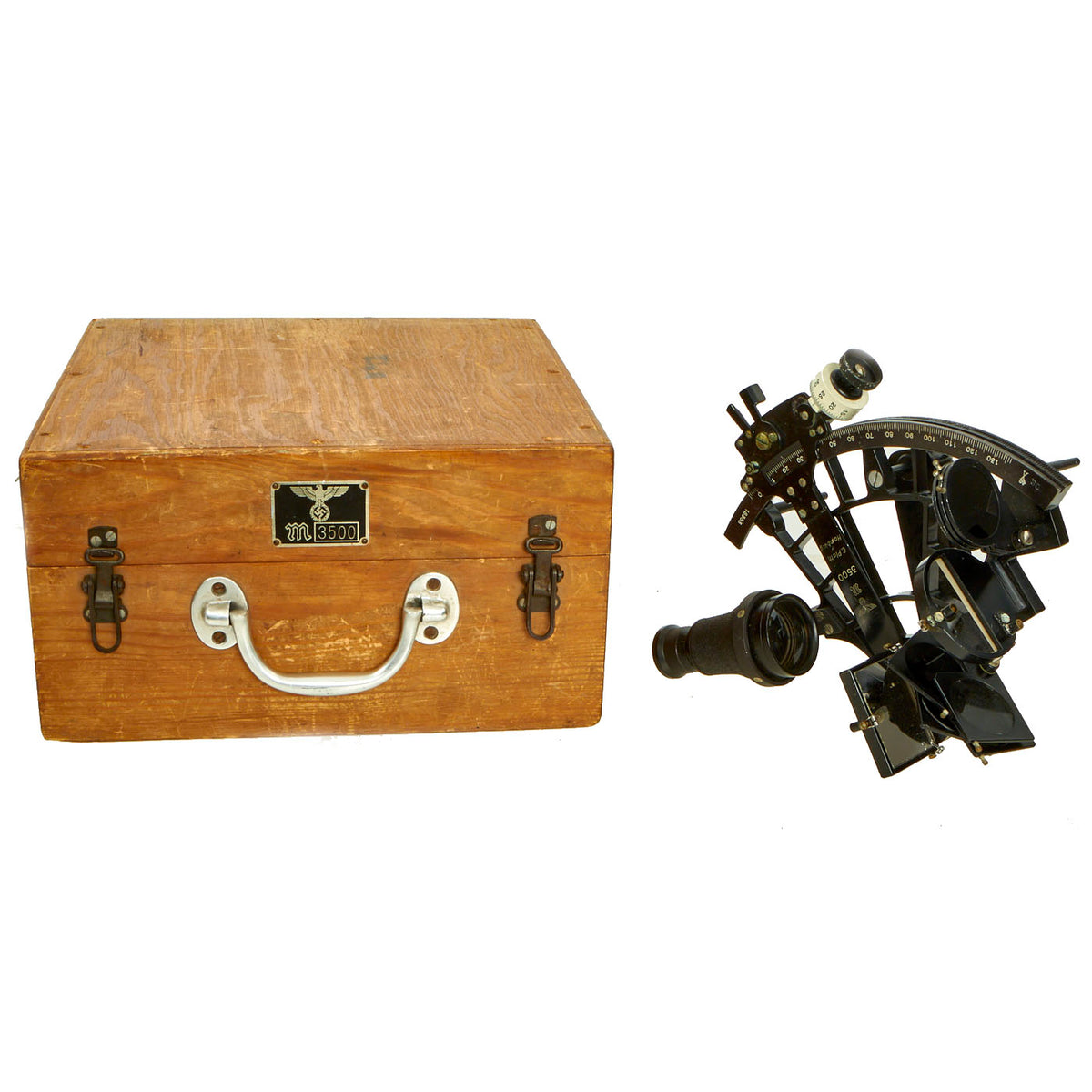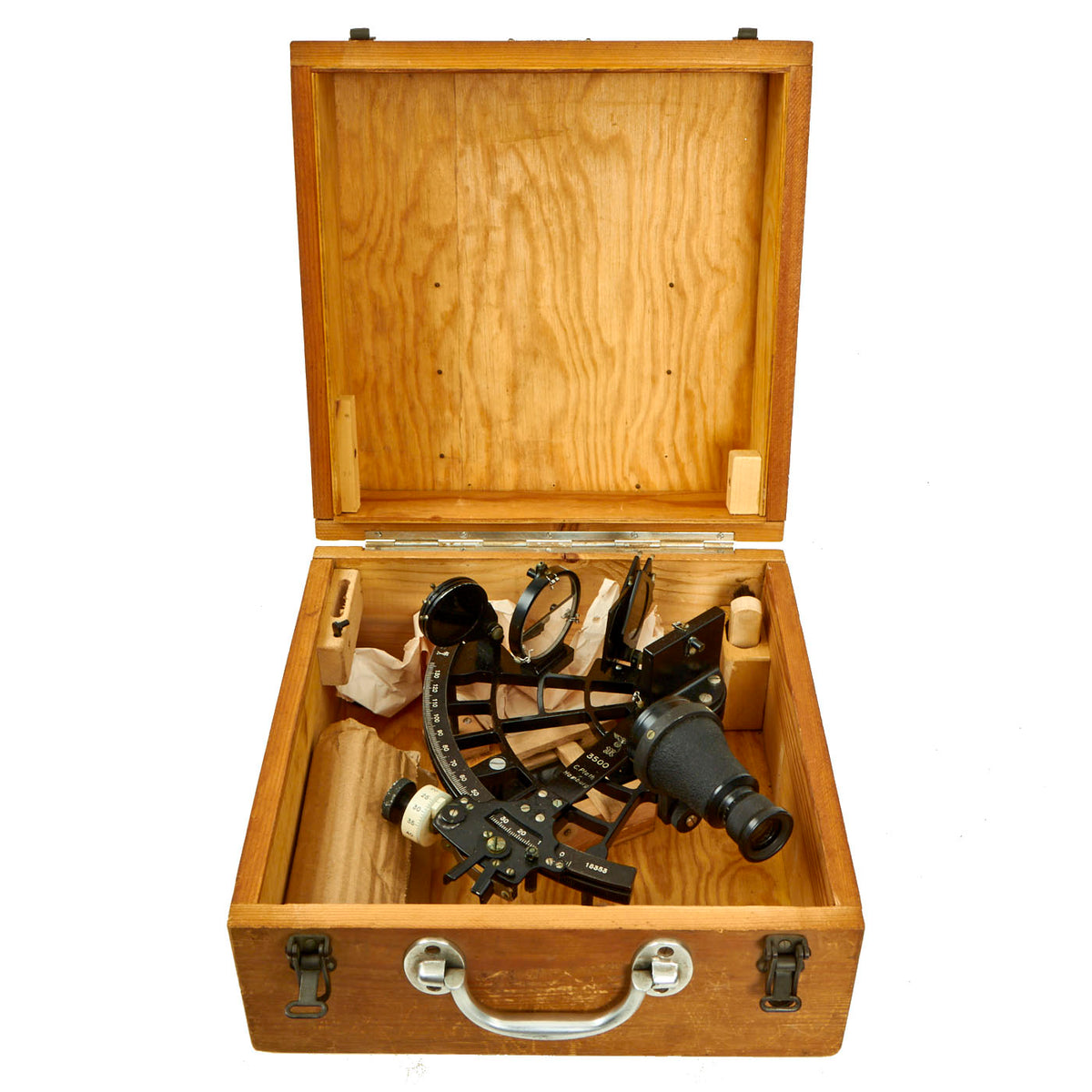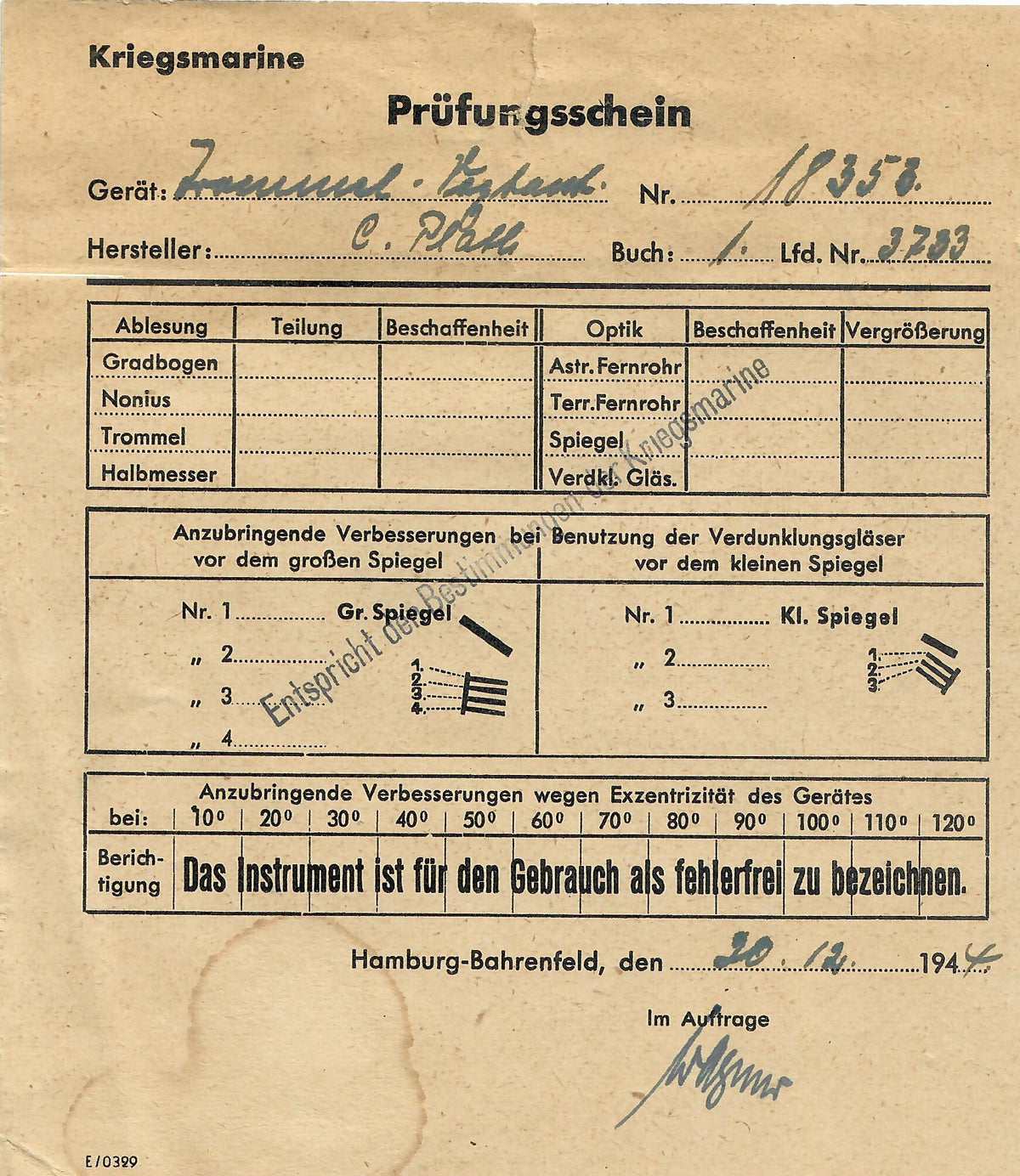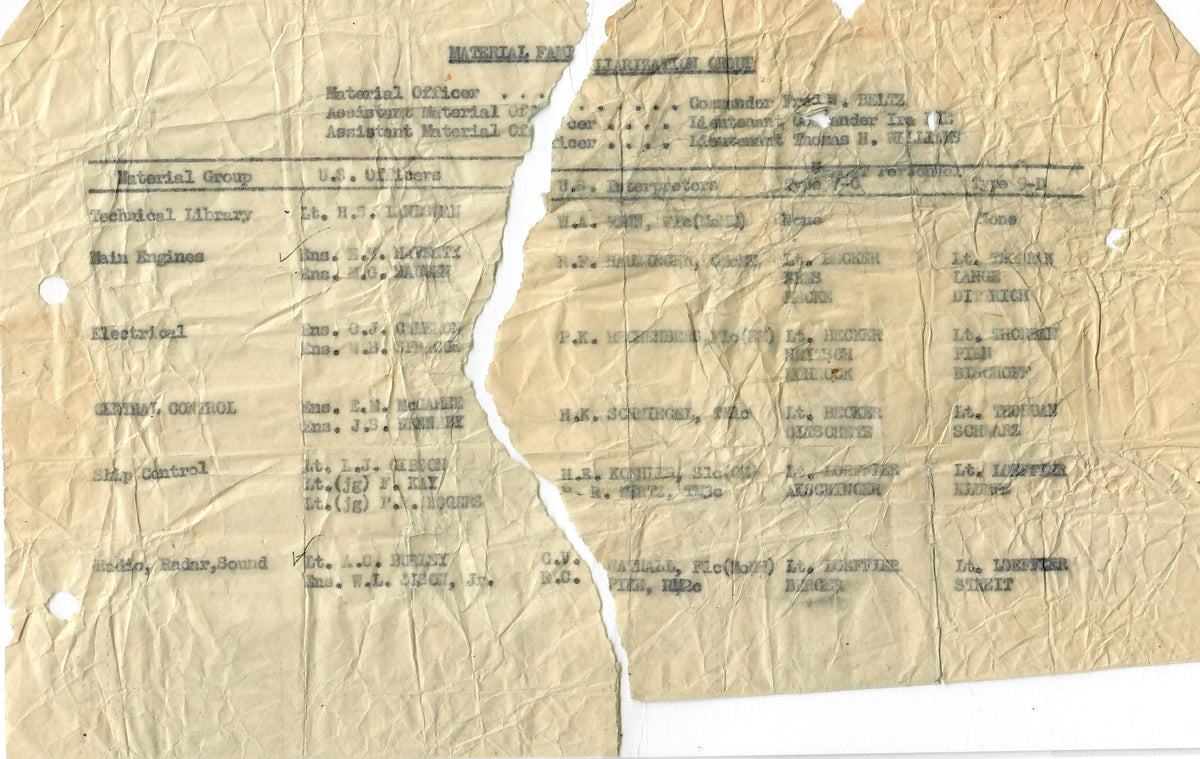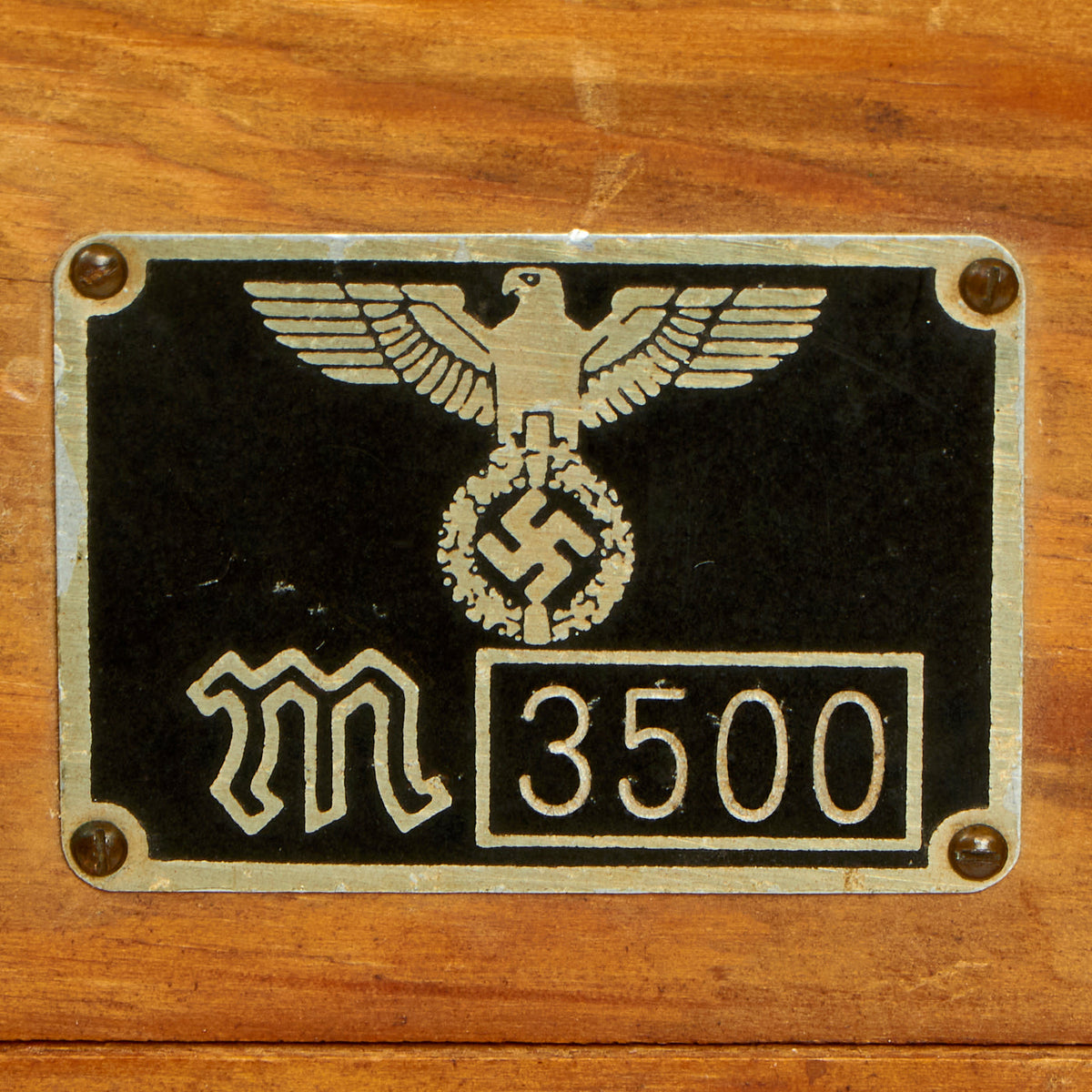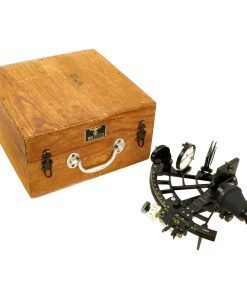Original German WWII German Kriegsmarine Navy Sextant by C. Plath with Original Case and Documents Original Items
$ 1.995,00 $ 498,75
Original Item: Only One Available. This navigation instrument is a C. Plath maker-marked, standard ladder pattern sextant, serial # 18353, was produced in Hamburg, Germany in 1944. Carl Plath started his firm in Hamburg in 1862 and continued the manufacture of quality sextants up and through the Second World War. The firm was shut down after the war but was allowed to re-emerge in the 1950s. The name ‘sextant’ comes from the extent of its limb that is the sixth part of a circle. The main use of a sextant is to determine the angle between a celestial object and the base horizon, which defines the object’s altitude. The arc portion of this marine sextant is graduated into degrees from right to left, starting from 0 to 120. With a sextant, knowledge of the time and date with valid charts allows a navigator to determine his latitude or position on the surface of the earth or on the open seas. The sextant is a double reflection instrument used to measure the angle between any two visible objects.
Sextant retains its major components including the frame, mirrors, micrometer assembly, monocular and scope that are intact and functional. Also comes with its original, maker-marked hardwood case in excellent condition. Sextant metal frame is painted a flat black and is in very good condition with almost no wear or chipping. Index arm with its micrometer assembly shows normal light surface edge flaking.
The 120” arc is an alloy set with black graduations on the surface. “C. PLATH / HAMBURG” stamped on the “main body” while its serial #18353 stamped on the right edge. Index mirror, circular split horizon mirror, four index shades and the three horizon shades are dusty but in fine condition. The set still retains the original paper certificate as well. The other document is for a Material Familiarization Group and lists the different groups of a U-Boat such as “Main Engines’ and “Electrical”. Also listed on the document are names of U.S. Officers, U.S. Interpreters and U-Boat Personnel. We believe this to have been a captured or salvaged U-Boat which this sextant came from, but there is no way of confirming it.
This is a lovely example and comes more than ready for further research and display.
Fast Shipping with Professional Packaging
Thanks to our longstanding association with UPS FedEx DHL, and other major international carriers, we are able to provide a range of shipping options. Our warehouse staff is expertly trained and will wrap your products according to our exact and precise specifications. Prior to shipping, your goods will be thoroughly examined and securely secured. We ship to thousands clients each day across multiple countries. This shows how we're dedicated to be the largest retailer on the internet. Warehouses and distribution centres can be located throughout Europe as well as the USA.
Note: Orders with more than one item will be assigned a processing date depending on the item.
Before shipping before shipping, we'll conduct a thorough inspection of the items you have ordered. Today, the majority of orders will be delivered within 48 hours. The delivery time will be between 3-7 days.
Returns
The stock is dynamic and we cannot completely manage it because multiple stakeholders are involved, including our factory and warehouse. So the actual stock may alter at any time. It's possible that you may not receive your order once the order has been made.
Our policy is valid for a period of 30 days. If you don't receive the product within 30 days, we are not able to issue a refund or an exchange.
You can only return an item if it is unused and in the same state as the day you received it. You must have the item in its original packaging.
Related products
Uncategorized
Uncategorized
Uncategorized
Uncategorized
Armored Burgonet Helmet & Polearm from Scottish Castle Leith Hall Circa 1700 Original Items
Uncategorized
Uncategorized
Band of Brothers ORIGINAL GERMAN WWII Le. F.H. 18 10.5cm ARTILLERY PIECE Original Items
Uncategorized
Uncategorized
Uncategorized
Uncategorized
Armoured Fighting Vehicles of the World: AFVs of World War One (Hardcover Book) New Made Items
Uncategorized
Uncategorized
Uncategorized
Uncategorized
Angolan Rebel 1970s era 60mm Inert Display Mortar from Angolan Civil War Original Items
Uncategorized
Uncategorized
Uncategorized
Uncategorized
Uncategorized
Uncategorized
Uncategorized
Uncategorized
